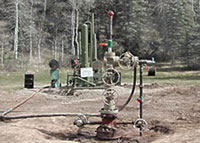One hundred years ago, President Theodore Roosevelt signed the Reclamation Act, creating a new government agency charged with making the desert bloom. The goal of the act, which gave birth to the Bureau of Reclamation, was to bring water to family farms in the West and lift the region out of the depression of the 1890s. But a century later, family farms have all but disappeared, and the West is home to a complicated web of large-scale industry, agriculture, booming cities, Native American tribes — and, of course, a wide range of plants and animals, some of them endangered. The Bureau of Reclamation is preparing for its centennial by planning a big party near the Hoover Dam (its signature achievement), but not everyone’s in the mood to celebrate. Some say the agency can’t meet the needs of the 21st century because it hasn’t altered its 19th century policies (best expressed by Franklin Lane, interior secretary from 1913 to 1920, who said it was a crime to let one drop of water flow unused to the sea). And they blame the agency with, essentially, designing and planning the environmental destruction of the West.


